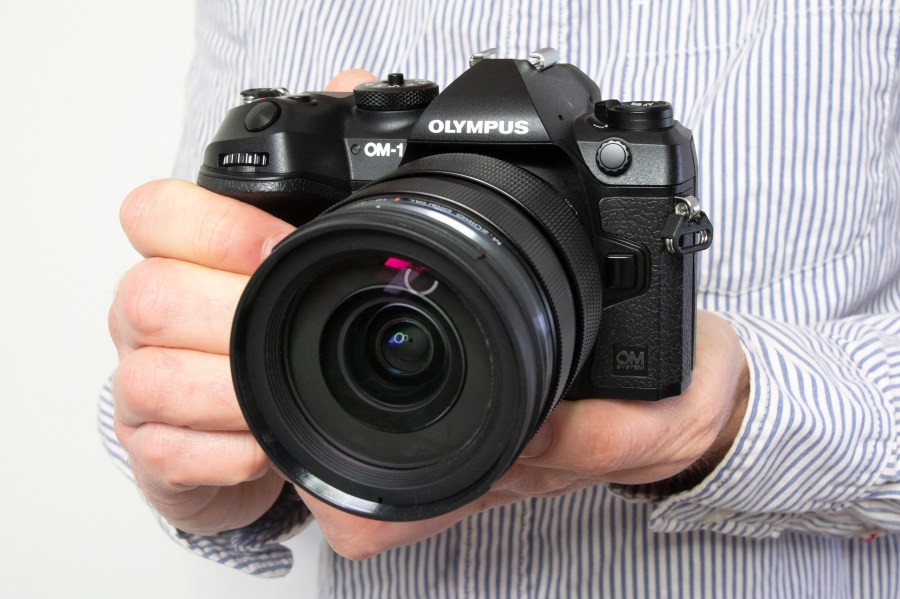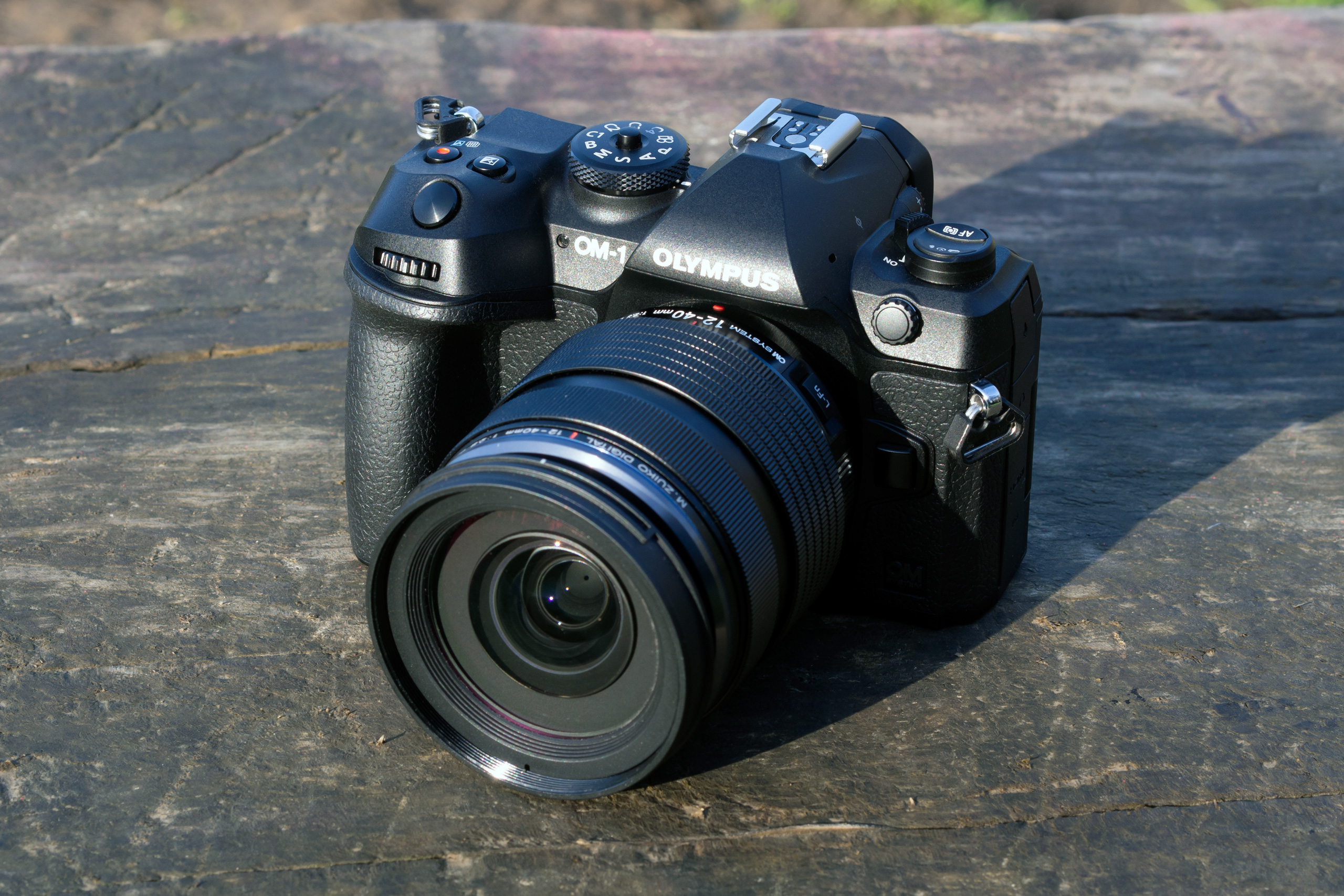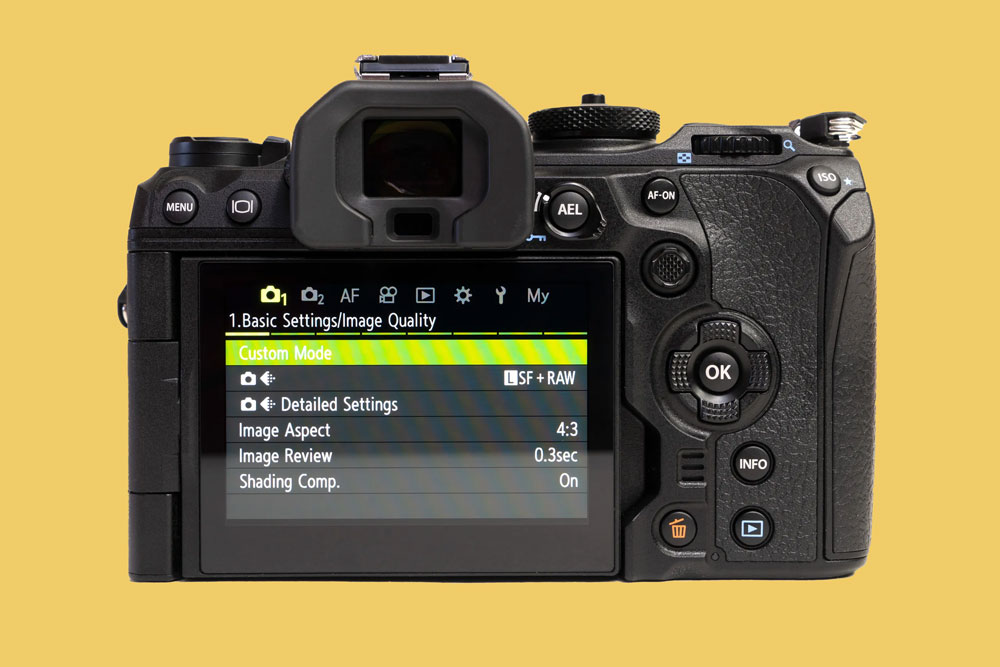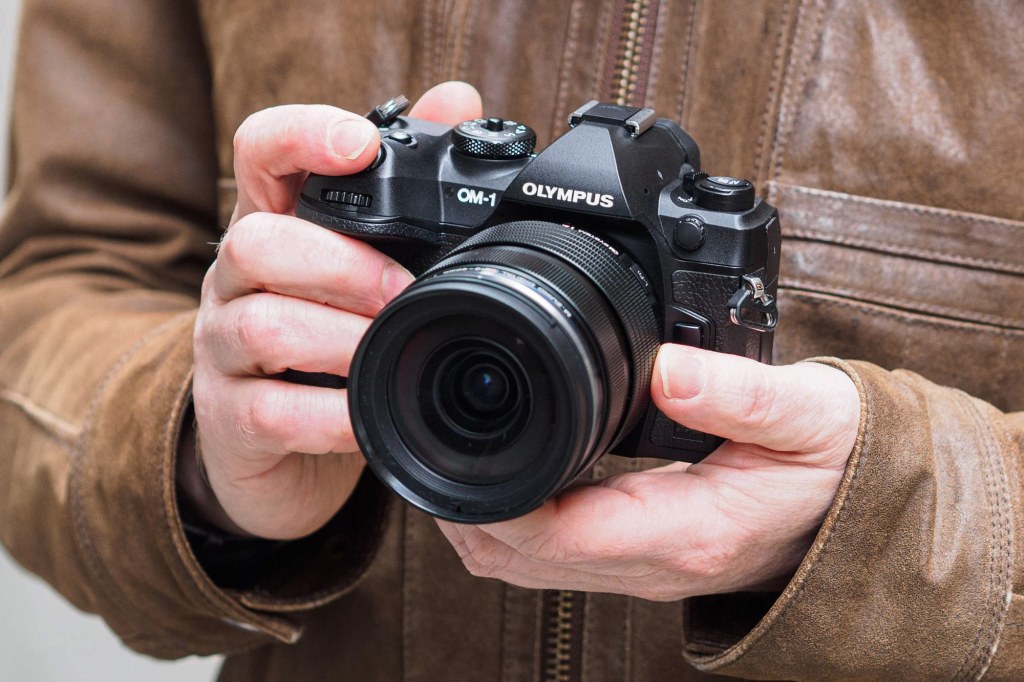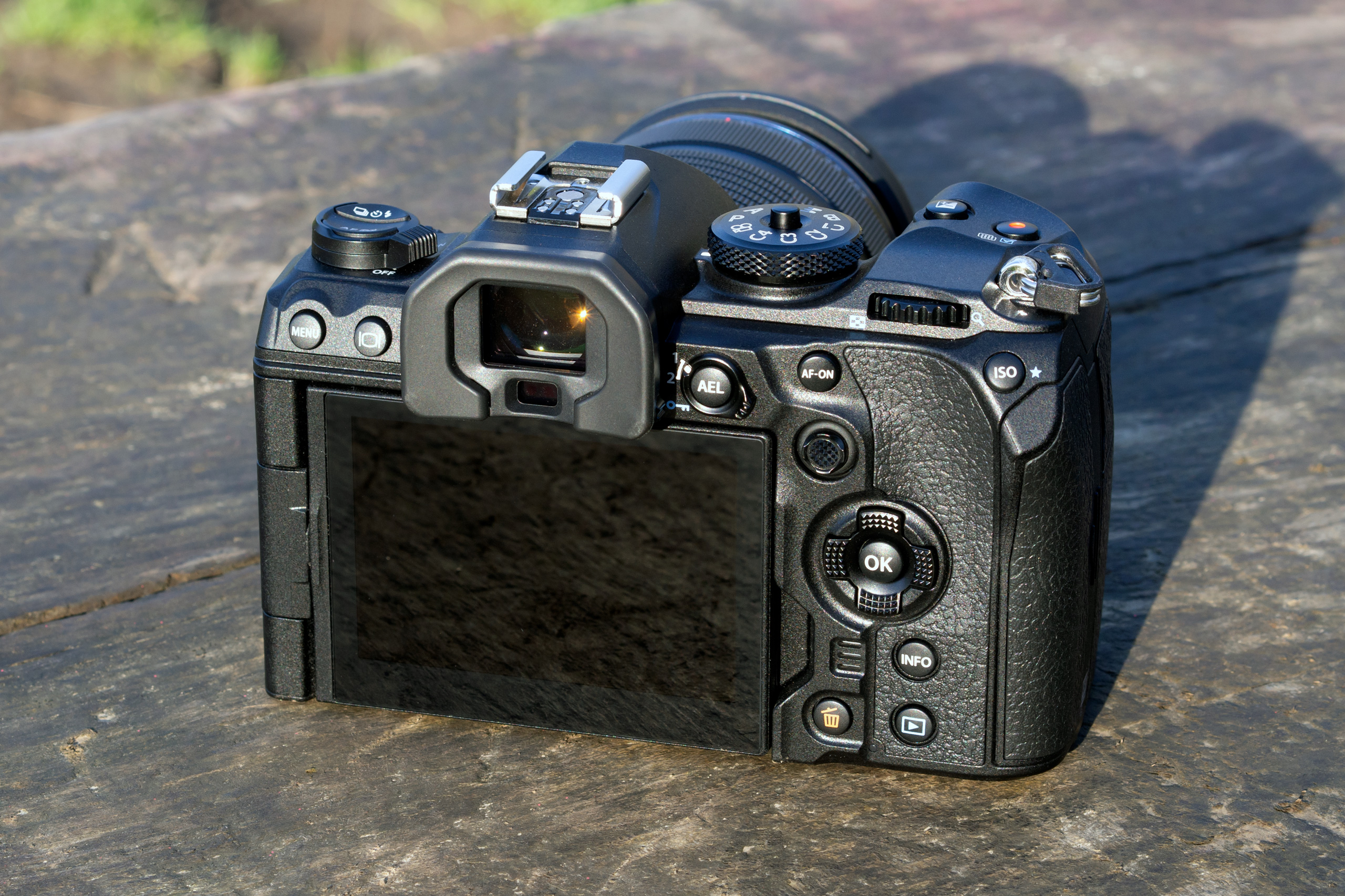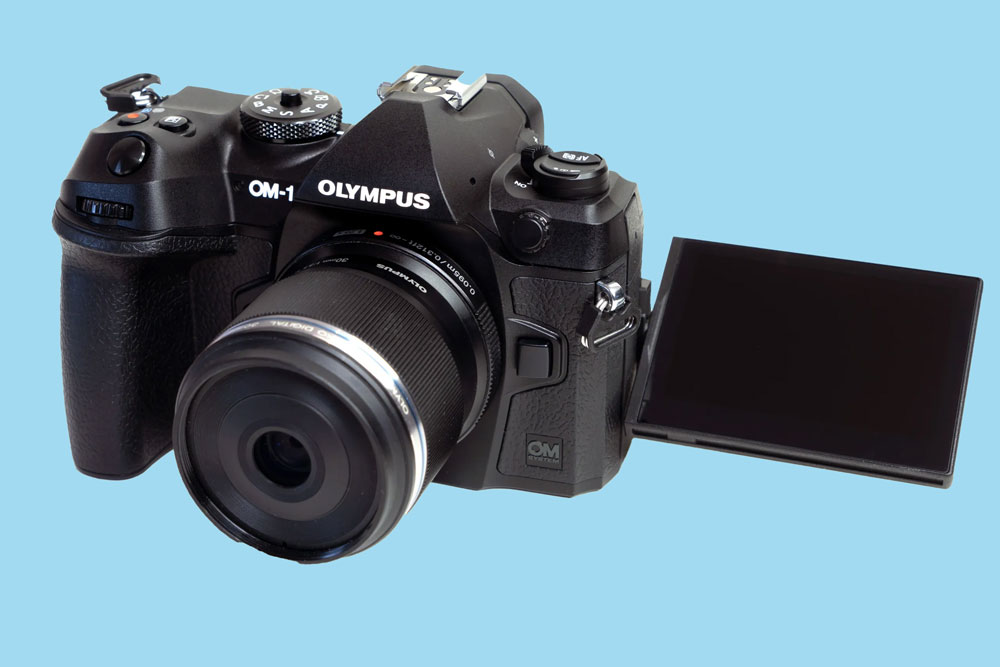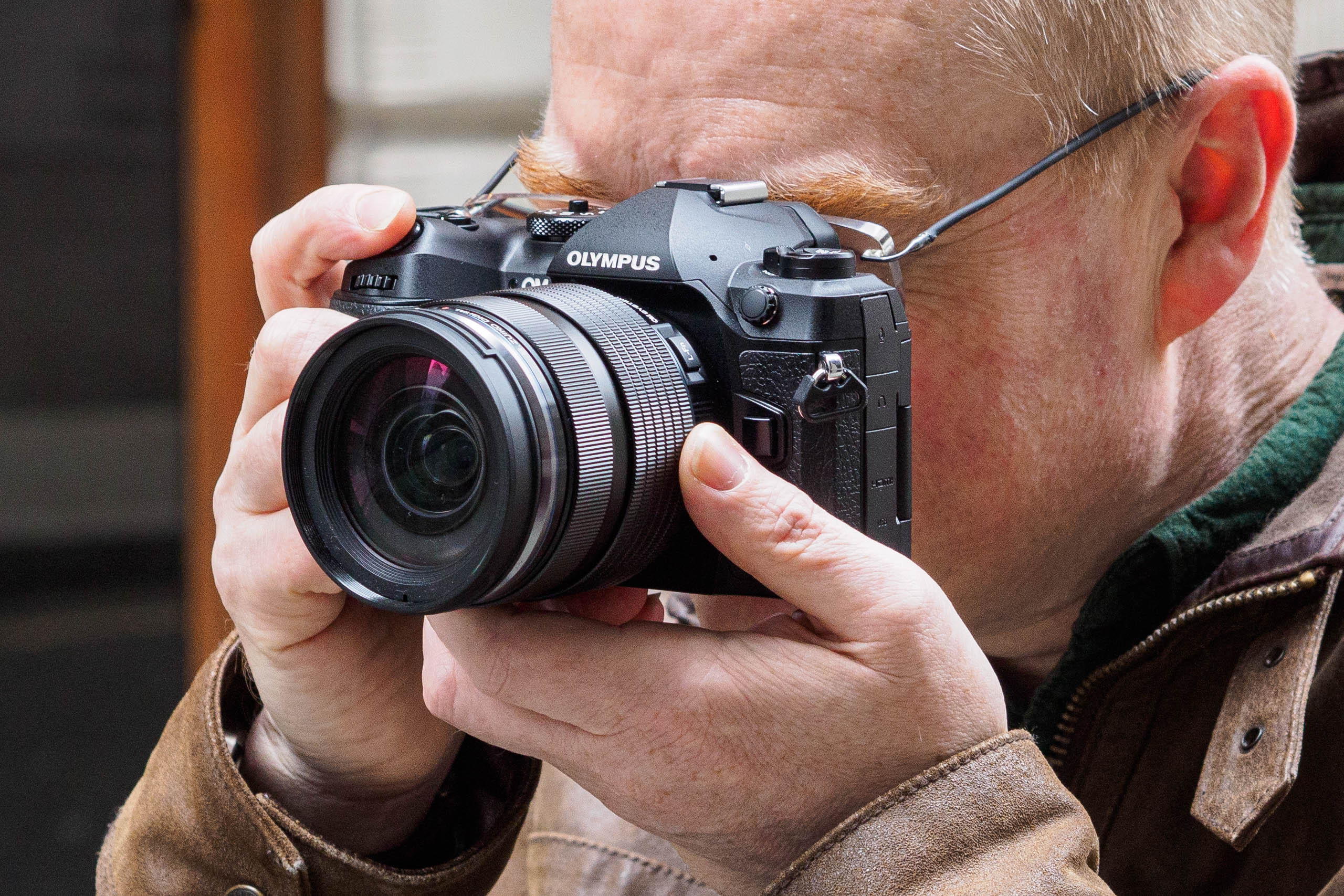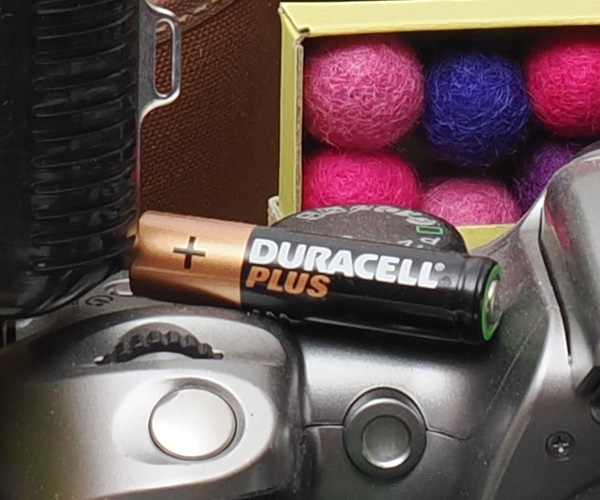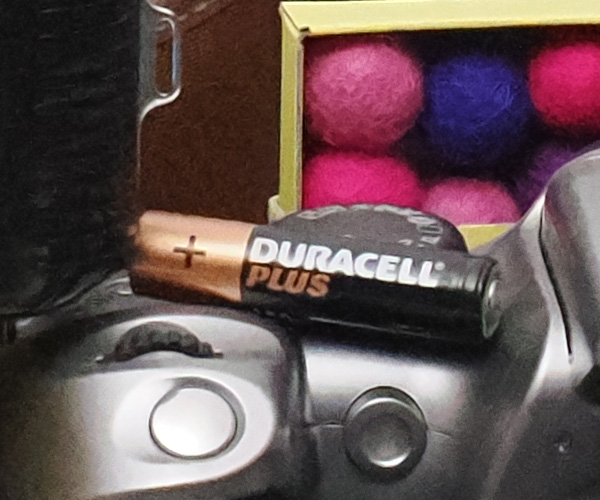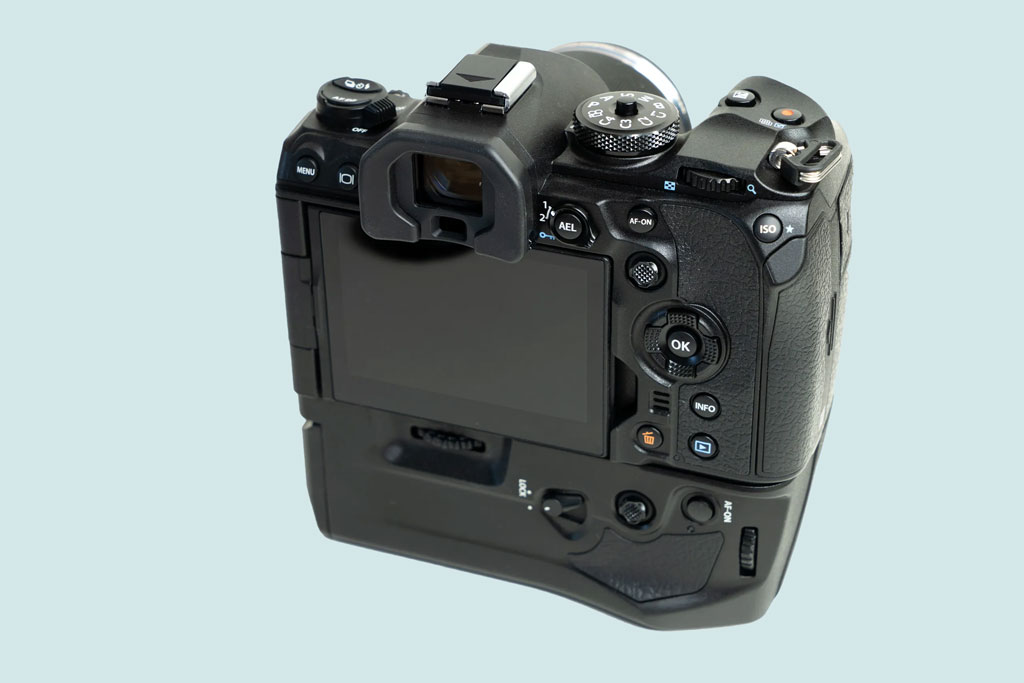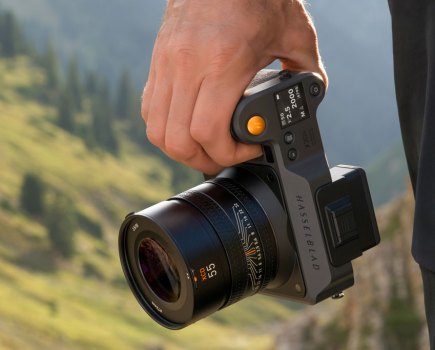Amateur Photographer verdict
The best Micro Four Thirds camera for stills photography when launced. For its price it beats expectations for subject detection AF, high-speed performance, and shooting features.- 50/120fps continuous shooting at 20MP raw (C-AF/S-AF)
- Excellent handling, aided by improved menus
- Great image quality
- High-res electronic viewfinder
- IP53 weather-rating and high build quality
- Impressive stabilisation
- Decent video
- Menus not touch sensitive
- 20MP sensor (some will want more resolution)
When the OM-System ‘Olympus’ OM-1 first arrived, no one quite knew what to expect. The sale of the Olympus imaging division to OM Digital Solutions in 2021 had left the future of the brand uncertain, and while the new owners had pledged to keep the spirit of Olympus alive, it was yet to be seen. Would this new line be able to match the quality of the best Olympus cameras?
Doubts disappeared when the OM-System ‘Olympus’ OM-1 arrived. Even from the name, it was clear how much respect the makers had for the Olympus legacy. There’s the obvious nod to the legendary Olympus OM-1 film SLR, one of the most popular and important 35mm cameras in history – in a lovely touch, this camera was also released to coincide with the original OM-1’s 50th anniversary.
Two years later the company’s latest flagship the OM System OM-1 Mark II debuted with the World’s first in-camera live Graduated ND filter, proving that OM Digital Solutions is steps ahead of any other camera company in computational photography, further solidifiyng them in the market.
But the name also calls to mind more recent models like the Olympus OM-D E-M1 III, to which this camera can be seen as a natural successor.
For all this, the OM-System arrived very much with its own identity, sporting a 20MP Stacked BSI Live MOS sensor with a completely new design. The body also got an overhaul, with a refreshed high-resolution OLED EVF and vari-angle touch-screen, and a completely reworked menu system.
- See our guide to the best Micro Four Thirds lenses
The updated sensor features a stacked design, and this combined with the new processor enables some truly impressive headline features. The OM-1 can burst shoot at an absolutely blistering 120fps with fixed AF, and manages a still very impressive 50fps with continuous AF.
The new post-Olympus range has continued to expand with the OM-System OM-5, a smaller and cheaper alternative to the OM-1 and successor to the Olympus OM-D E-M5 Mark III. This camera showed that OM-System and the OM-1 weren’t a one-hit wonder; our editor concluded at the end of his OM-System OM-5 field test that it was his perfect travel camera.
You’ll have gathered that we’re pretty impressed with the OM-System; the OM-1 in particular. However, more than a year out from its release, and with its successor the Mark II, does it justify its price tag? Which kinds of shooters is it suited to, and who should look elsewhere? These are the questions we’ll tackle as we get into our full OM-System ‘Olympus’ OM-1 review…
At a glance
- $1,670 / £1,749 body only
- 20MP Four Thirds Stacked BSI Live MOS sensor
- 50fps with C-AF, up to 120fps fixed AF
- ISO80 – ISO102400 (extended)
- 1053-point AI detect Quad Pixel AF
- 5.76m-dot electronic viewfinder, 1.65/0.825x magnification
- 1.62m-dot 3in vari-angle touchscreen
- 5-axis in-body stabilisation (upto 8EV)
- CINE 4K 60fps video recording
- IP53 rating with specific lenses
The OM-1 arrived on the market in February 2022, exhibiting a completely new ‘Quad Pixel AF’ system, with 1053 cross-type AF points covering the entire sensor. This system supports continuous shooting speeds up to 50fps with Continuous AF, when using a compatible Olympus PRO lens. “Quad pixel AF” divides the pixel (photodiode) into 4 subpixels underneath the colour filter, and should not be confused with a Quad Bayer filter – it is NOT a Quad Bayer sensor.
AI detection AF has been improved upon from the Olympus OM-D E-M1X, the company’s previous flagship, and now detects planes, trains, motor vehicles, birds, and animals such as cats and dogs, with both subject and face/eye recognition. This is said to be three times faster than the E-M1X.
Focus is sensitive down to -5.5 EV, and you can choose whether to have a small focus point, all the way up to the full frame, with multiple sizes and areas in-between. The focus area can also be customised, with 4 different custom groups available.
In-body Image Stabilisation (IBIS) has long been a feature of Olympus cameras, and the OM-1 continues the tradition. Using its 5-axis Sync IS with a compatible lens will give up to 8 stops of correction. When using a non-sync lens, you can expect up to 7 stops of IS.
Beyond this, the camera also adds 1 step better rolling compensation, as well as improved panning compensation. There’s a new “Handheld assist” to support handheld long exposure shooting, which also works with Live Composite and Live Bulb.
Computational photography – the camera includes a whole new menu section dedicated to this. This is where you’ll find High-res shot, Live ND, Focus stacking, HDR, multiple exposure, plus Live composite / time / bulb mode options. These last three settings can be quickly accessed using the B setting on the mode dial.
Key points
- New image processor – TruePix X – 3x faster image processor than TruePic VIII / IX, giving 2x faster High-Res and Focus Stacking processing.
- OLED EVF – The camera features a new 5.76m dot EVF with 0.83x magnification, 120fps refresh rate, blackout free shooting, and anti-fogging.
- IP53 rating – The camera body meets the IP53 rating, and is dust and splashproof when used with splashproof PRO lens.
- Power – The new BLX-1 battery gives a 25% increase in performance, for 520 shots per charge, and the camera supports USB-C charging as well as PD support (9V, 3A).
Features
The new high-res OLED EVF, with 5.76m-dots, offers the same resolution as premium models such as the far more expensive Canon EOS R3, and Leica SL2-S, and a higher resolution than the Nikon Z9 (which sits at 3.69m dots). Magnification is 1.65x (0.825x), the same as the E-M1X, or 1.48x (0.74x) selectable, with the same optical quality as the E-M1X, and a 120fps refresh rate. There’s an anti-fogging coating for shooting in wet conditions, and a 0.005 sec display delay.
The High-Res Shot mode gives 80/50MP images, and is easier to access using the movie button in photo mode. OMDS (OM Digital Solutions) evidently wants to make it easier to use this feature without the need for a tripod, with handheld hi-res giving 50MP images. Using the high-res shot mode also gives 2 steps better noise performance due to multiple images being combined, and images are combined automatically in-camera.

Video recording has been improved to include Cine 4K at 60fps from 5K oversampling, with 4:2:2 10bit (H.265 codec) internal recording, and FullHD at up to 240fps (cropped).
For the more advanced filmmaker, there’s also support for C4K, 60p, 4:4:4, 12-bit external recording using Apple ProRes RAW with Atomos Ninja V support. Unlimited video recording is also possible, only limited by battery life.
The camera features a completely redesigned menu system, that is now neatly colour coded, and browsable with the front and rear command wheels, or the 4-way controller. Unfortunately, they are not selectable using the touch-screen. However, the Super Control Panel (SCP) is touch-sensitive for most options.
Greyed out items that are not selectable are explained with a pop-up explaining why, and you can also get information on each option by pressing the Info button. There’s also a MyMenu section so that you can get quick access to your favourites.
It’s also worth noting that the OM-1 is the only camera in the range currently to benefit from these menus. The OM-5, for whatever reason, reverted to the older style of Olympus menus, which take some time to get used to. In terms of simple useability, this makes the OM-1 the best camera across the Olympus/OM-System stable.
High-speed shooting – Continuous shooting buffer size:
- 10fps: 129 shots (raw), 169 shots (JPEG LF)
- 20fps: 108 shots (raw), 116 shots (JPEG LF)
- 120fps: 92 shots (raw or JPEG LF)
Pro Capture lets you capture 70 pre-shot images, double that of the E-M1 III and E-M1X.
Shutter life is rated to 400,000 shots (when using the mechanical shutter), and we expect an unlimited number of shots can be taken when using the electronic shutter.
The IP53 rating is an improvement over the IPX1 rating of the E-M1 III, and the camera is dustproof, splashproof, and freezeproof with a lightweight magnesium alloy body. To benefit from the IP53 rating you need to ensure you use compatible lenses.
It almost goes without saying, that the camera features Wi-Fi, and Bluetooth built-in for remote connections and control with your smartphone or tablet. You can also use the camera as a very high quality webcam if you want, using Olympus’s free webcam software.
Differences between the OM-1 and the E-M1 III / E-M1X
- Additional 1stop added to Live ND, now upto ND64
- 1053 AF points vs 121 (E-M1 III / E-M1X)
- Up to 8 stops IS (vs 7.5 E-M1 III, sync IS)
- 3-inch touchscreen with 1.62m dots (up from 1.04m)
- 5.76m-dot EVF 0.83x magnification (vs 2.36m-dots, 0.74x on E-M1 III)
- 50fps C-AF, or 25fps C-AF depending on lens, vs 18fps C-AF on E-M1 III
- Improved Pro Capture – now 70 shots before you shoot!
- 2x faster High-Res and Focus Stacking processing
- TruePix X – 3x faster image processor than TruePic VIII / IX
Design and handling
The OM-1 will look familiar to anyone who has used E-M1 cameras, but with a few subtle changes designed to make the camera easier to use: a new AF-ON button on the back of the camera, a smaller function lever (switches between AF and MF), and redesigned command dials at the front and back. The shutter release button is separate to the command wheel, and the hand grip gives an excellent feel, helping the camera feel great in the hand.
The controls are all neatly positioned to make them easy to reach, and you have direct access to the most important settings, with dedicated ISO, Exposure compensation, and AF-ON buttons. There’s a dedicated video record button, and the majority of buttons and controls can be customised to your own personal preferences. The ISO button also doubles as image rating button in playback, so you can quickly give images a star rating out of 5.
The camera body has a solid metal construction, and with multiple seals it has better weather-sealing than other Olympus cameras; being the first to offer an IP53 rating that is both dust and splash-proof when used with specific PRO lenses. The camera is ever so slightly larger than the E-M1 III, at 134.8 x 91.6 x 72.7mm, and weight is slightly increased, at 599g with battery and memory card (excluding eyecup).
The battery compartment is found underneath, and features a metal latch that locks firmly into place. You can see there are good levels of weather sealing, and it’s possible to open the battery compartment even when using a relatively large tripod plate. The new battery, model BLX-1, has a rating of 2280mAh (7.2V), which is an improvement over the 1720mAh (BLH-1) battery used in the E-M1 III. Using the Quick sleep mode is said to double battery life, and the new, optional HLD-10 battery grip can also double battery life.
Viewfinder and Screen
The electronic viewfinder (EVF) looks great, with a high-resolution OLED display at 5.76m-dots. It gives a very clear view, and the optics used are also of high quality, giving a sharp view right into the corners. Icons and text are clearly displayed, and you can access the menus and Super Control Panel if needed to change settings.
You get the choice of 0.83x magnification, filling the frame, or 0.74x if 0.83x is too large. The optics have an anti-fogging coating, to help with visibility when using it in inclement weather, and there’s a 120fps / 0.005s refresh rate.
You’ll also find that you can shoot at 120 or 50fps without blackout, and this really is useful when you want to ensure you’re still capturing the subject, and the AF-tracking is doing its job (at 50fps).
A simulated OVF (optical viewfinder) view is available, or S-OVF, and this is designed to give you a view more similar to using an optical viewfinder. A new “Night Vision” option has been added to support astrophotography, and this is designed to work with the “Starry Sky AF” setting.
There’s a 3inch 1.62m-dot touch-screen, which is fully articulating, and can be tilted out to face forwards, great for selfies, vlogging, and other things. The view is very clear, and colours look great, matching the viewfinder. The screen also has good viewing angles, and it’s also bright enough outdoors, with adjustable brightness levels. The microphone socket can be used without the screen bumping into it, due to a higher position.
Some of the icons appear a little bit small at times on the rear screen, and this would benefit from an update; just making the icons a little bit larger would help. For example, the multi-shot high-res shooting mode is shown with a small icon, as is the AF AI detection mode selected.
Autofocus
With the AF-ON button on the back, the camera can be used in the same way as other cameras with this, and for those that love to use ‘back-button focus’ this will be a real bonus.
You can customise the AF area, and whilst there are numerous areas already setup, you can customise and setup four different, additional focus areas. AF settings can be quickly accessed with one of the many dedicated AF buttons, and pressing the top left AF/metering button gives you access to metering options, as well as AF modes including: S-AF, C-AF, MF, C-AF + Tracking, Preset MF, and Starry Sky AF.

AI subject detection gives you the choice of motorsports (cars, motorcycles), airplanes (including helicopters), trains (of all types), birds, and animals – specifically cats and dogs. When you’re not focusing on these subjects, then the camera will also focus on humans, with face and eye detection AF, which is extremely rapid.
Subject detection requires you to choose the subject before shooting. However, this can be set to a custom function button to make it quicker to switch subjects. Using this you can see the camera quickly track the subject, as well as the main area also highlighted with a smaller box, for example the head/face and eyes of a subject, even when the subject is looking away.
More on bird AF performance here: Why the Olympus OM-1 is great for bird photography, with Tesni Ward.
It’s worthwhile customising a button for this, or adding it to the MyMenu section, as it can take a while to find the option otherwise. It doesn’t appear to be accessible on the Super Control Panel (perhaps a firmware update will add this).
Starry Sky AF – This AF options works well to help you capture photos of stars at night, with the camera focusing correctly on the distant stars.

There’s an option to automatically create time-lapse videos in-camera that you could use in conjunction with this, with a wealth of settings (including 4K, Full HD video output). You also get to set the interval time from 1 second, up to 24hrs, 59m, 59seconds, and can take up to 9999 shots!
Performance
Image quality and detail is excellent, particularly at lower ISO speeds, with a noticeable improvement to be found in the levels of detail visible in images. In fact, depending on your subject, you may want to reduce the sharpness slightly particularly with portraits, depending on the lens you use.

The new OM System M.Zuiko Digital ED 12-40mm F2.8 II PRO lens gives excellent images, with rapid focus and extremely sharp results. It’s been updated to improve image quality and weather-resistance, as well as having a new fluorine coating. The lens performs extremely well, and has an impressively close focus distance.
Colour is, as you would expect with an ‘Olympus’ camera, very pleasing, Olympus cameras have always given great colour reproduction, thanks to an excellent auto white balance system. There are multiple picture modes (or profiles) to choose from, and you can customise the sharpness, contrast, saturation, and gradation of each to your own personal preferences, if needed, and I’m only saying ‘if needed’ as for the most part you won’t need to as the camera gives excellent results straight from the camera.

Image stabilisation performance – The image stabilisation system is excellent, though by default the camera will also tend to raise the ISO and shutter speeds in low light; so if you’re happy to use the IS system more, rather than rely on higher ISO/shutter speeds, then it’s worth adjusting the settings. Then you should be able to get sharp shots at much slower shutter speeds than you would with other camera systems, with the benefit of lower noise (and cleaner detail) in images, assuming you’re not shooting moving subjects.
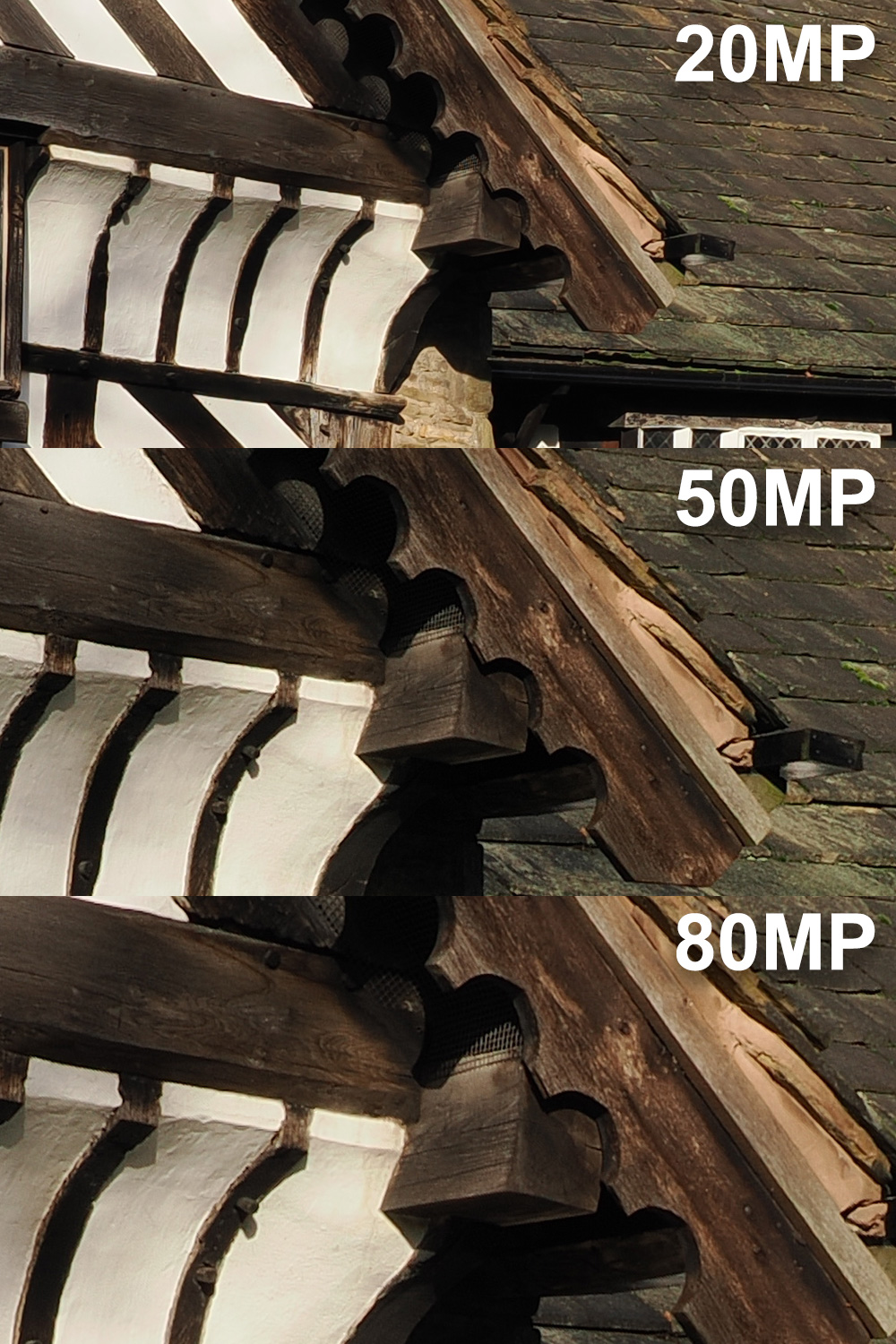
High-res 50MP/80MP modes – In the normal photo modes, holding the movie record button and turning the rear dial lets you switch on the high-res mode, as well as switch between handheld and tripod modes. The camera combines multiple shots in camera, producing a higher resolution image, with 50MP images possible handheld, and 80MP images when using a tripod. Processing speeds have been improved, taking roughly 5 seconds, meaning you can more quickly move on to your next shot.
The results possible are impressive, with additional detail visible thanks to a higher resolution image. That said, any movement in the scene, such as trees blowing in the wind may degrade the image quality in these areas.
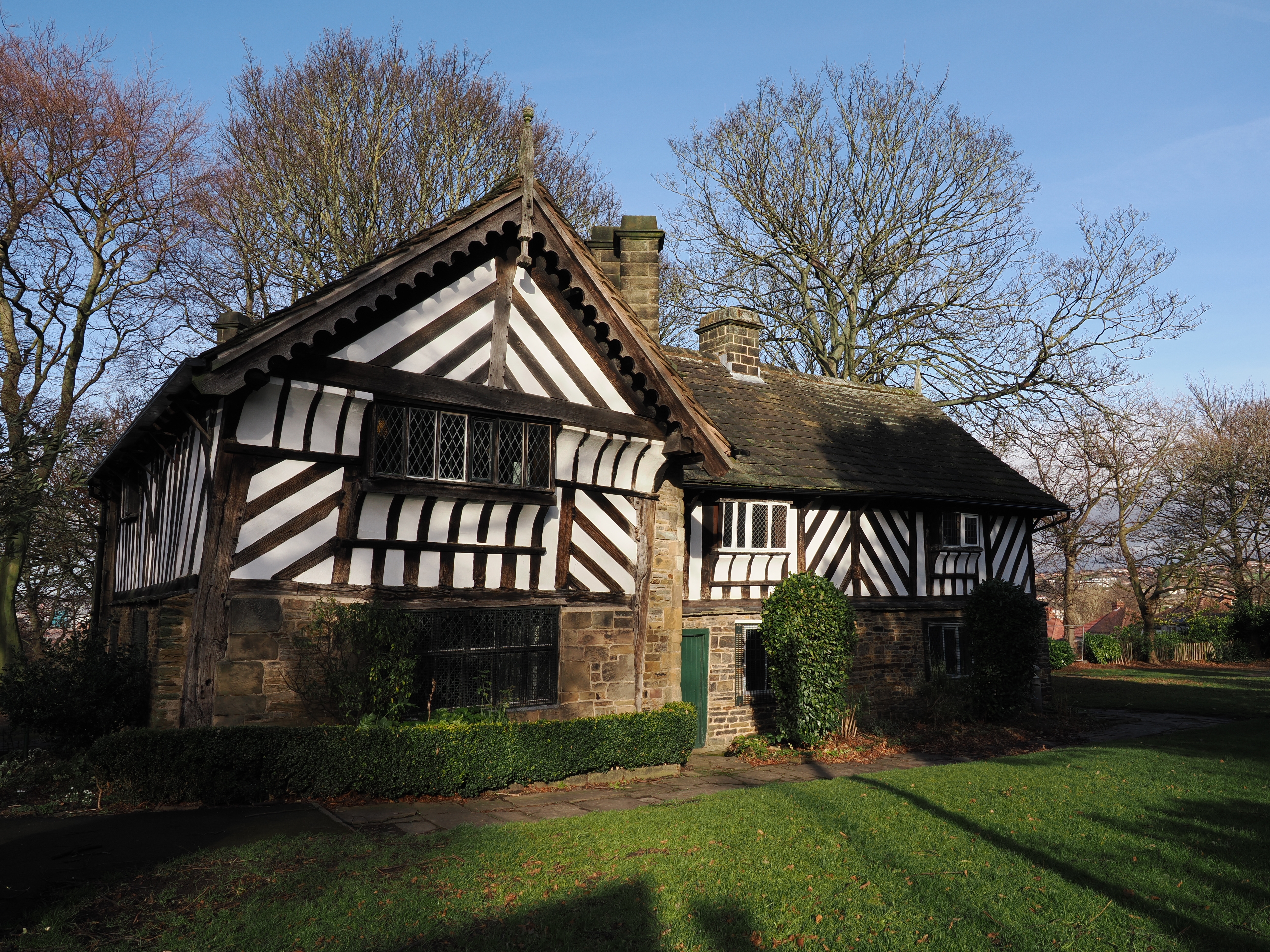
Pro Capture – Shooting at 120fps is all well and good if you like shooting lots of shots and hoping you captured the right thing. However, your reaction times need to be really good to adjust to the unexpected. That’s where Pro Capture comes in, letting you capture up to 70 shots before you fully press the shutter release button. This makes it a really useful feature, as you can be more confident of getting the action, and can often shoot less. With lesser cameras, you have to start shooting and hope the action happens while your camera still has enough buffer to store all the shots without slowing down.
Like the other high-speed shooting options, you can shoot at 120fps (ProCap SH1) with fixed AF/AE, or at up to 50fps (ProCap SH2) with C-AF/AE tracking with the right lens. You’ll need to ensure light levels are good though, as the shutter speed needed for this is 1/640s.
ISO and Noise Performance
The camera has made improvements in noise performance, with both a BSI CMOS sensor (BSI CMOS sensors give improved noise performance compared to CMOS sensors), and the camera also adds a new AI algorithm for noise reduction. These images are crops from JPEGs straight from the camera, and you can click them to view the full-size versions.
OMDS says the standard range of the OM-1 is ISO200 to ISO25600, with ISO80, and ISO100 being extended (low) settings, and above ISO25600 being extended (high) settings, going all the way up to ISO102400. This is a noticeable improvement over the standard range of ISO200 to ISO6400 on the E-M1 III.
While ISO6400 felt like the limit on the E-M1 III, I’d say that using ISO12800 and ISO25600 on the OM-1 produces improved results. Whilst ISO25600 on the Olympus PEN E-P7 showed image quality drop off noticeably, the OM-1 delivers better results, with JPEG images looking good, albeit with an obvious drop in detail as the ISO speed increases.
Whether you’ll want to shoot at these higher ISO speeds will be up to you, and of course, processing the raw files, you can adjust the noise reduction settings to suit.
Images show excellent detail, particularly fine detail at lower ISO speeds, particularly when using a high-quality lens like the 12-40mm f2.8 PRO lens, however, with a base ISO speed of ISO200, the extended speeds of ISO80 and ISO100 do show a reduced dynamic range.
It’s nice to see a Micro Four Thirds camera offering a competitive ISO range, making it more competitive with APS-C cameras.
You can also process raw images in-camera, to adjust the noise reduction options (Off, Low, Standard, High), or use Olympus Workspace, which has been updated to include an AI Noise reduction tool. The raw .ORF files are also supported in the latest version of Adobe Camera Raw.
However, one area where this camera lags behind is in resolution, with a 20MP sensor, it simply doesn’t match other cameras that offer 24/36/42/45/50MP sensors. Yes, you can use the high-res modes for still subjects, but not everyone wants to shoot still subjects. No doubt, if this camera did offer a higher resolution sensor, we’d have a more limited ISO range, and most likely be complaining about noise performance, so ultimately it’s good to see an extended ISO range, even if it does mean we have a 20MP sensor.
It’s interesting that Panasonic has introduced a new 25MP MFT sensor for the Panasonic Lumix GH6. Will this make it across to the OM System range one day? We will have to wait and see.
Video performance
Unlimited 4K 60fps video is available, with options for CINE 4K or UHD, with AF including face/eye detection. High-speed Full HD video can be recorded at speeds up to 240fps (8-bit), or 200fps (10-bit), albeit without sound, and S-AF (pre-record) / MF.
OM-Log400, Flat and HLG video picture mode profiles are included, as well as the same colour profiles as the photo mode, however options are limited depending on H.264/H.265 selection, with photo profile, Flat and OM-Log400 available with H.264 (8-bit), and OM-Log400 and HLG (Hybrid Log Gamma) available with H.265 (10-bit). View Assist is available and displays a standard BT.709 colour gamut onscreen.
Audio is recorded at 16-bit, 48KHz, or 24-bit, 96KHz, with options for wind noise reduction, volume limiter, plus separate levels for internal / external mic, along with settings for plug-in power, and headphone volume settings. H.264 video has a maximum bitrate of 202mbps, and H.265, with more efficient compression has a maximum bitrate of 152mbps.
Detail in video footage is good, and the camera’s IBIS gives impressive stability that can give your video the look a camera mounted on a gimbal.
There are microphone and headphone sockets as you’d expect, as well as PD (Power Delivery) over USB Type-C. However, one thing that will most likely disappoint videographers is the micro HDMI connection, which is not as secure as full size HDMI.
Zebra display with two levels is available, plus a red frame around the screen when recording.
Value for money
Competitors to the OM-1 include the following APS-C and Micro Four Thirds models:
- Fujifilm X-H2S, 26MP, 40fps continuous shooting
- Sony Alpha A6700, 26MP, 11fps continuous shooting
- Panasonic Lumix GH5 II, 20MP, 12fps continuous shooting
- Canon EOS R7, 32MP, 30fps continuous shooting
There’s also the Panasonic Lumix G9, Olympus OM-D E-M1 III, and E-M1X which all offer 60fps continuous shooting.
Full-frame models with a similar price point include:
- Nikon Z6 II, 24MP, 14fps continuous shooting
- Sony Alpha A7 IV, 33MP, 10fps continuous shooting
However, it’s extremely difficult to find other cameras that offer such high-speed continuous shooting as the OM-1, without increasing the price massively, with the closest being the far more expensive Nikon Z9, which offers 120fps continuous shooting at 11MP, or 30fps at 47MP.
OM System OM-1 Verdict
The OM System OM-1 gives Micro Four Thirds users and fans a raft of technological upgrades, making it one of the most sophisticated cameras in the format. The upgrade to a BSI Stacked Live MOS sensor was long wished-for and long overdue; providing a real a step up in image quality and noise performance. Olympus had been lagging behind other manufacturers on this, many of whom had been featuring BSI CMOS sensors in their cameras for several years*.
The re-introduction of the OM-1 name was a perfect choice, a brilliant tribute to the 50th anniversary of the original OM-1. The new name dramatically simplifies the long-winded and often confusing naming system found on previous Olympus cameras. However, this is tinged with a bitter-sweet sorrow, as this is the last camera to bear the Olympus branding, and the official name of the camera is OM System OM-1.
This was borne out with the introduction of the OM-System OM-5, on which the Olympus branding was nowhere to be seen. While that camera provides a compelling alternative to the OM-1, being both cheaper and more portable for travel, it’s clear that the OM-1 is still very much the flagship of the range, and it’s comprehensively more powerful across the board.
If you enjoy shooting with Olympus cameras, then the refinements made with the OM-1, along with the improved image quality, features, and improved video options, makes this camera a real joy to use, with the updated menu systems another welcome change.
Without doubt, the OM System OM-1 is the best Micro Four Thirds camera currently available for stills photography. It goes beyond what you would expect from a camera of its price in terms of subject detection AF, high-speed performance, and the sheer number of useful shooting features available.
The camera also resolves the complaints we made about the E-M1 III, with a new high-resolution viewfinder that looks fantastic, improved screen, improved menus, and the vertical grip now has a joystick. There’s also improved battery life, dramatically improved AF, and a noticeable improvement in image quality.
For fans of smaller mirrorless camera systems, the OM-1 offers a really compelling option, particularly when you factor in the range of compact Micro Four Thirds lenses available for it. There will be those that want a full-frame sensor, but by sticking with Micro Four Thirds, OMDS has been able to create a relatively compact, weather-sealed camera system, with a vast choice of matching size lenses. They’re also able to use this to their advantage, with an ultra-high-speed sensor.
Yes, full-frame mirrorless cameras are also quite compact, but are the lenses? And if you want high-speed, you’re looking at a significantly larger, and more expensive system.
For those that need or want 120fps continuous shooting (at 20MP), or 50fps with continuous-AF, this camera really does offer some unique features, including Pro Capture, particularly if you compare the weight savings and price difference between this and other high-speed cameras, such as the Sony A1, Canon R3, and Nikon Z9. The OM-1 weighs in at around 985g with the 12-40mm F2.8 II lens, and the 40-150mm f2.8 with 1.4x TC weighs 1010g, giving a total weight of under 2Kg.
The improvement in weather-sealing gives this camera real appeal when you want a camera system that can be used in all kinds of weather, rather than being left at home, as long as you pair the camera with the appropriate splash-proof lens.

Related reading:
- Olympus OM-1 field test – Is the WOW justified?
- Why the Olympus OM-1 is great for bird photography
- OM Digital solutions release firmware version 1.1
*Samsung NX1 APS-C BSI (2014), Sony RX100 III 1inch BSI (2013), Fujifilm X-T3 APS-C BSI (2018), Sony A7R II FF BSI (2015).

